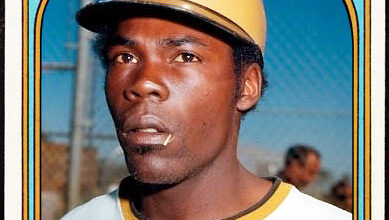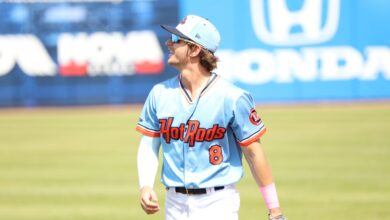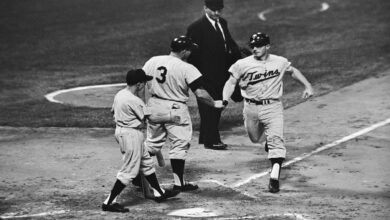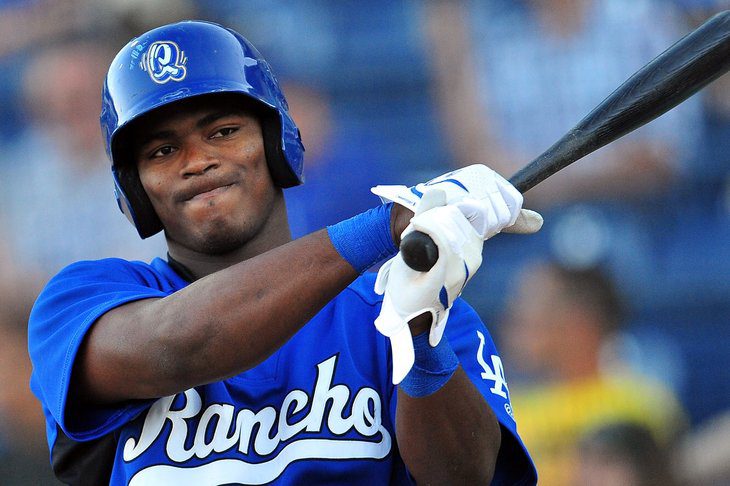
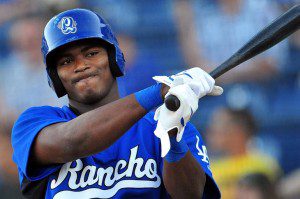
Prospects come and go with the seasons. A prospect can be the next best thing one year and an utter disappointment the next. They are more enigmatic than Antonio Alfonseca’s six-digit appendages. Some feel positive about a prospect, while others feel negative. Either way, there is usually more consensus when we reach the upper rungs of prospect rankings.
In part one of this series on the 2013 top 50 MLB prospects, I break down each prospect rather briefly. As the series continues until we reach the top 10, there may be names you know and others you need to Google.
My perspective is based on potential as well as what is already known about each prospect. Obviously, more is known about some prospects compared to others. What is not known is the course each prospect will take. Some could end up as legitimate minor league players who can’t cut it in the big leagues ( e.g., Brandon Wood), while others will emerge as everyday contributors to their respective clubs (e.g., Starlin Castro).
Without further ado, here is the first installment of the 2013 top 50 MLB prospects:
50. OF Adam Eaton – Arizona Diamondbacks
Despite sizing in at 5’-8”, Eaton’s ability to compete at the big-league level stems from his defense. Offensively, Eaton will not be a power hitter, but he will be able to nab extra-base hits more often than not. He never hit below .300 in the minors, but in 103 plate appearances for Arizona late last season, Eaton struggled with a .259 average. Expectations abound for Eaton, and he could start in center field on opening day. If he indeed lands the gig from the onset, look for Eaton to bat leadoff for the Diamondbacks.
49. RHP Allen Webster – Boston Red Sox
Since coming to Boston in the trade that sent Adrian Gonzalez and Company to the Los Angeles Dodgers, Webster has been nothing short of surprising. While he is held in high regard, Webster displayed a strikeout rate of 12.00 per nine innings pitched at double-A last season. He has a high ceiling, but endurance has been an issue. Don’t expect to see Webster hurried to the majors in 2013. He has a ton of talent, but at the end of the day, the Red Sox organization still doesn’t know if he’s a starter or a reliever. Despite aiming to be a starter, the troublesome nature of his endurance has caused concern.
48. 1B Matt Adams – St. Louis Cardinals
Arguably the best slugger in Minor League Baseball in 2011, Adams failed to deliver on his farm system success when called to duty last season. A short stint with the Cardinals from May through June showed Adams’ propensity to struggle with plate discipline. Regardless, he houses enough power to be a legitimate long-ball launcher in the big league. With Allen Craig settled in at first base, Adams will struggle to find an opportunity to play on a full-time basis. Therefore, he will begin the season in triple-A with the hope of something opening up for him in the near-term.
47. OF Gregory Polanco – Pittsburgh Pirates
Sixteen home runs and 40 stolen bases will earn recognition no matter who you are. For Polanco, those numbers from last season are enough to arouse interest in what the 21-year-old prospect could offer Pittsburgh in a few years. With a strikeout percentage of 13.2, Polanco clearly is developing good plate discipline. The question remains: Is Polanco a one-year wonder? If Polanco does not begin the year at double-A Altoona, he will land there shortly. If he prospers, don’t be surprised to see him move through the ranks and land in Indianapolis before he turns 22. This will be a telling year for Polanco, though. He struggled in all facets of his game in 2010 and 2011.
 46. RHP Noah Syndergaard – New York Mets
46. RHP Noah Syndergaard – New York Mets
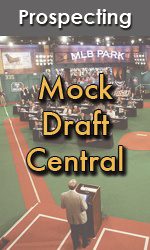
45. OF George Springer – Houston Astros
A swing-and-miss hitter who absolutely crushed the pitching at the single-A Advanced level, Springer struggled mightily when landing at double-A. Between rookie league and single-A advanced, Springer tallied 26 HR, 118 RBI and a .301 AVG in 585 plate appearances. He also had 33 stolen bases. But when called up to double-A, Springer struggled with a line of 2 HR, 5 RBI, and .219 AVG in 81 plate appearances. The small sample size of double-A may be a misnomer, but it is telling. His numbers from single-A advanced had scouts foaming at the mouth until he faced some serious off-speed pitching in the Texas League. Adjustments will be key to the development of Springer, and if he doesn’t adjust, he will become another prospect who baited scouts everywhere into believing he was legit when he wasn’t.
44. 3B Kaleb Cowart – Los Angeles Angels
Despite being a couple of years away from the big show, Cowart has Angels fans excited for what could be an in-house solution at third base. Cowart’s plate discipline in the early stages of his development have evolved for the better as his walk-to-strikeout ratio has improved. Add in the fact he has a knack for power and Angels fans have no reason not to get excited. In 693 plate appearances last season, Cowart smacked 17 home runs while driving in 111 runs. His .251 average is not too enamoring though. Regardless, Cowart appears to be one of the preeminent third base prospects, with 2013 setting the stage as a watershed year in his development.
43. RHP Alex Meyer – Minnesota Twins
Received from the Washington Nationals in the deal that sent Denard Span out of the Twin Cities, Meyer has the potential to be one of Major League Baseball’s best closers. The window has obviously not closed on Meyer developing as a starter, but with a two-pitch combo of fastball and slider, he appears set to become a late-inning problem solver. Despite being a few seasons away (at the very least), Meyer appears to have the character of an impact pitcher. Despite the high hopes of him being a future ace for Minnesota, he appears to deliver more as a closer.
42. 3B Nolan Arenado – Colorado Rockies
Arenado has fallen from the good graces of not just scouts but apparently the Rockies organization, too. With untapped potential as a power hitter at the hot corner, the talent Arenado possesses should be considered a commodity. Arenado struggled making the leap to double-A in 2012, but one primary reason of his struggles could be due to immaturity. Either way, its possible Arenado was in a funk he simply could not shake. With the Rockies bent on rebuilding, he could eventually be used as a trade chip since rumors abound about him displeasing the Rockies’ front office. Then again, the Rockies could just sour on him should his 2013 performance not meet the expectations of a considerably elite third base prospect.
41. OF Yasiel Puig – Los Angeles Dodgers
Signed in 2012 to a seven-year, $42 million contract, this Cuban defector played very little due to the negotiations and bargaining surrounding his acquisition by the Dodgers. In single-A advanced ball, Puig delivered a .327 AVG, 1 HR, 4 RBI and 7 stolen bases in 59 plate appearances. Of course, this is too small of a sample to judge. In the baseball dictionary, Puig’s photo would be under the word “raw.” In some discussions, it has been said Puig has a much higher ceiling than fellow Cuban slugger Yoenis Cespedes. Either way, this ranking is based on pure potential and much more will be known of Puig as he heads to double-A this season.
The next installment of the 2013 top 50 MLB prospects continues the countdown with no. 40 through no. 31, including Bubba Starling and one certain prospect who many will think is ranked much lower than he should be.


